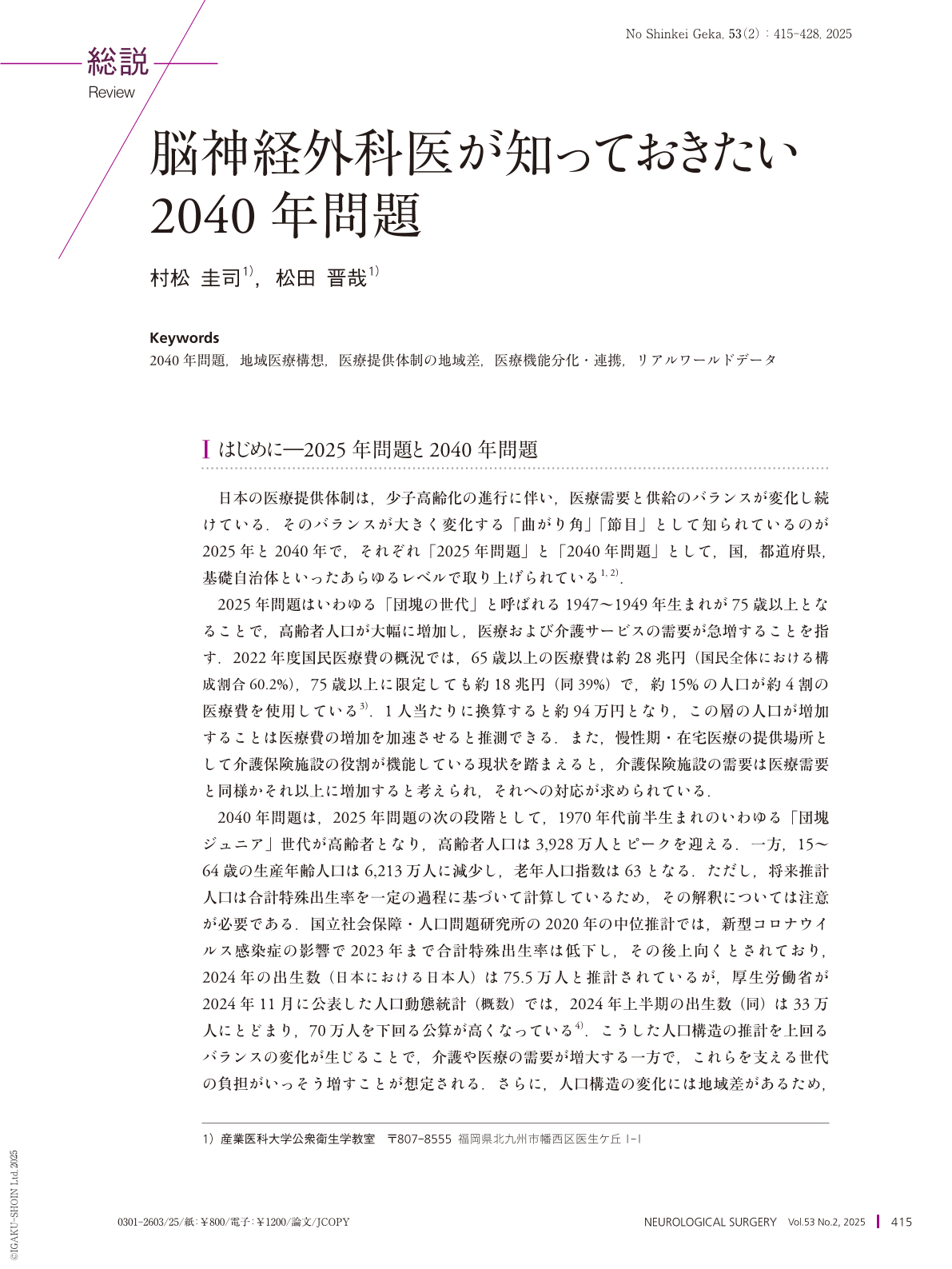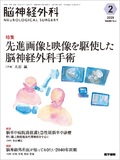Japanese
English
- 有料閲覧
- Abstract 文献概要
- 1ページ目 Look Inside
- 参考文献 Reference
Ⅰ はじめに—2025年問題と2040年問題
日本の医療提供体制は,少子高齢化の進行に伴い,医療需要と供給のバランスが変化し続けている.そのバランスが大きく変化する「曲がり角」「節目」として知られているのが2025年と2040年で,それぞれ「2025年問題」と「2040年問題」として,国,都道府県,基礎自治体といったあらゆるレベルで取り上げられている1, 2).
2025年問題はいわゆる「団塊の世代」と呼ばれる1947〜1949年生まれが75歳以上となることで,高齢者人口が大幅に増加し,医療および介護サービスの需要が急増することを指す.2022年度国民医療費の概況では,65歳以上の医療費は約28兆円(国民全体における構成割合60.2%),75歳以上に限定しても約18兆円(同39%)で,約15%の人口が約4割の医療費を使用している3).1人当たりに換算すると約94万円となり,この層の人口が増加することは医療費の増加を加速させると推測できる.また,慢性期・在宅医療の提供場所として介護保険施設の役割が機能している現状を踏まえると,介護保険施設の需要は医療需要と同様かそれ以上に増加すると考えられ,それへの対応が求められている.
2040年問題は,2025年問題の次の段階として,1970年代前半生まれのいわゆる「団塊ジュニア」世代が高齢者となり,高齢者人口は3,928万人とピークを迎える.一方,15〜64歳の生産年齢人口は6,213万人に減少し,老年人口指数は63となる.ただし,将来推計人口は合計特殊出生率を一定の過程に基づいて計算しているため,その解釈については注意が必要である.国立社会保障・人口問題研究所の2020年の中位推計では,新型コロナウイルス感染症の影響で2023年まで合計特殊出生率は低下し,その後上向くとされており,2024年の出生数(日本における日本人)は75.5万人と推計されているが,厚生労働省が2024年11月に公表した人口動態統計(概数)では,2024年上半期の出生数(同)は33万人にとどまり,70万人を下回る公算が高くなっている4).こうした人口構造の推計を上回るバランスの変化が生じることで,介護や医療の需要が増大する一方で,これらを支える世代の負担がいっそう増すことが想定される.さらに,人口構造の変化には地域差があるため,特に地方部では既に人口減少や高齢化がかなり進行・加速しているため,医療資源の効率的な再配置や,地域特性に応じた柔軟な医療提供体制の構築が必要とされている.
Japan's healthcare system is undergoing significant transformations, driven by demographic shifts, with critical challenges anticipated in 2025 and 2040. The Ministry of Health, Labor, and Welfare is promoting regional medical care vision plans to restructure healthcare delivery across different administrative levels, addressing evolving medical demands and population changes. However, the implementation of these plans has been uneven, with many regions focusing primarily on reducing hospital beds rather than on effectively redistributing medical roles and functions. Time constraints have hindered meaningful discussions regarding comprehensive healthcare restructuring. The text illustrates these challenges through two case studies in the Fukuoka Prefecture: Fukuoka-Itoshima and Keichiku areas. These regions demonstrate contrasting demographic trajectories with significantly aging and declining working-age populations. Notably, the Fukuoka-Itoshima area anticipates a substantial increase in cerebrovascular disease hospitalizations, whereas Keichiku expects moderate changes. This analysis suggests that future neurosurgeons must be adaptable professionals capable of navigating clinical, management, and policy domains. By 2040, they should proactively develop strategies to address demographic changes and involve current medical trainees and students in strategic planning of the healthcare landscape.

Copyright © 2025, Igaku-Shoin Ltd. All rights reserved.


